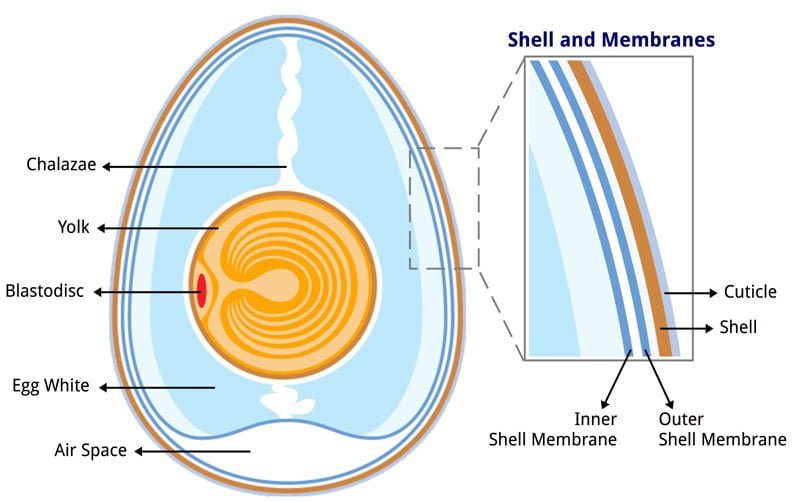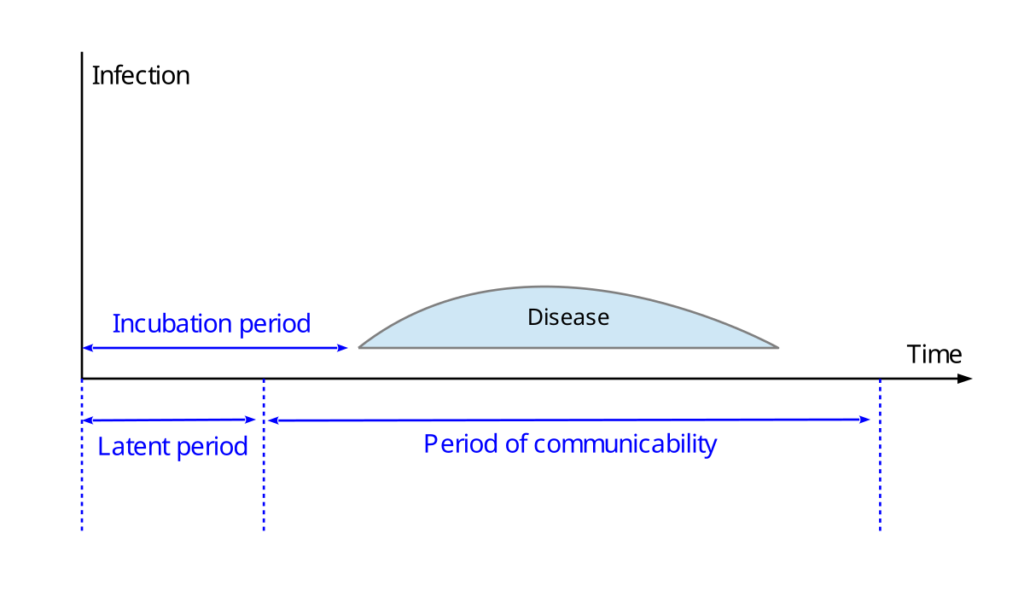In hens, egg formation begins with the development of the yolk in the ovary, which then progresses through several stages in the oviduct, where it gains the egg white, membranes, and shell before being placed. Selection for table eggs is based on shell quality, size, and freshness, which is commonly determined by candling and storage in cool settings. They must be viable, consistent in size, clean, and somewhat fresh before being incubated. Incubation necessitates careful temperature, humidity, and ventilation management, Egg Formation as well as regular egg turning until the final few days before hatching.
Table of Contents
The Process of Egg Formation
Egg formation in the reproductive system of the hen, which is an intricate and intriguing biological process. The voyage starts in the ovary of the hen, which contains thousands of ova, or potential egg yolks. Until it is prepared for ovulation, each yolk is first contained within a follicle and then continues to develop. A substantial amount of development and nutrient accumulation occurs in the yolk during this maturation period, which might take several days.
The release of the yolk from the ovary during ovulation occurs when it has reached full development. The next step of egg creation is when the yolk enters the oviduct, a long, coiled tube. Infundibulum: If sperm are available, fertilization can take place in this first portion of the oviduct. When the yolk moves to the magnum, it stays in the infundibulum for roughly fifteen minutes.

Secreting the albumen, or egg white, is the function of the magnum, the longest segment of the oviduct. Three hours or so are needed for this stage. In the event that the egg is fertilized, the albumen acts as a protective coating and gives the growing embryo more nutrition. The shell membranes form at the isthmus where the egg travels after the albumen is deposited. About 1.5 hours pass during this phase.
Afterwards, it goes through the shell gland, or uterus. For around twenty hours, this is where they spends the most of its journey. It acquires its tough, protective outer shell during this period as calcium carbonate is deposited. Depending on the breed of the hen, coloration is the last stage.
Once completely developed, it is laid by the hen through the vagina. Usually, it takes 24 to 26 hours for the complete egg formation process, including ovulation and laying. The wonders of avian biology are highlighted by this complex process, which also emphasizes how crucial good nourishment and care are to egg formation.
Selection of Eggs for Table Purpose
A thorough set of standards is used while choosing eggs for the table to guarantee they are the best quality and safe to eat. Egg grading is one of the main ways to assess an egg’s acceptability. Grading eggs is a common procedure that assesses internal components including the state of the yolk and albumen as well as external characteristics like cleanliness, integrity, and form of the shell.
The eggshells’ cleanliness is very important. The shells of them must be spotless, unbroken, and devoid of cracks and other defects. A clean shell lowers the chance of infection and also signifies proper handling techniques. Additionally crucial are the shell’s integrity and shape; they should ideally be symmetrical, round, and free of anomalies that can compromise their structural integrity.
The albumen and yolk are examined to determine the interior quality. The yolk should be solid and spherical, with no visible flaws or discoloration, and it should be centered. To indicate freshness, the albumen, or egg white, should be thick and transparent. An older, lower-quality egg is indicated by a thin, watery albumen.
The methods of candling and visual inspection are crucial to the egg selection procedure. Visual inspection makes it possible to evaluate external elements like the shape and cleanliness of the shell. In contrast, candling entails exposing the egg to intense light in order to examine its internal composition. Internal flaws that are not apparent from the outside, including blood spots or anomalies in the yolk and albumen, may become visible through this process.
Egg quality is largely maintained by regulatory requirements and quality assurance organizations. Before they are sold for table service, they must comply with several national laws. These guidelines guarantee that they are safe for consumers, have few flaws, and are not contaminated. Respecting these rules ensures that the best eggs are available for purchase, protecting both consumer satisfaction and public health.
Selection of Eggs for Incubation
To enhance the odds of successful hatching, they must be viable and of high quality while being chosen for incubation.
- Fertility: Only fertilized eggs should be chosen. Candling or ensuring that the eggs come from a flock with active roosters can both be used to determine fertility.
- Age of the Eggs: Within 7 days of lying, they should be retrieved and placed in incubators.
- Size and Shape: They should be medium-sized and uniformly shaped. Avoid huge, tiny, or deformed eggs because they may not hatch properly.
- Shell condition: The shell should be pristine, with no fractures or abnormalities. It is not recommended to wash dirty eggs because this can lose the protective bloom.
- Storage: Before incubation, they should be stored in a cool, damp place with the pointed end down. The ideal storage temperature is 50-60°F (10-15°C), with a relative humidity of about 75%.
Incubation
Incubation is the process of keeping fertilized eggs under conditions conducive to hatching. Here are the necessary steps:

1. Incubator Setup
- Temperature: Maintain a constant temperature of approximately 99.5°F (37.5°C).
- Humidity: Maintain humidity levels at 40-50% for the first 18 days, then raise to 65-75% for the final three days (hatching period).
- Ventilation: Ensure adequate airflow to give oxygen and eliminate CO2.
2. Turning eggs
To prevent the embryo from clinging to the shell, flip the eggs at least three times per day. This is critical during the initial 18 days of incubation.
3. Candling
Candling should be performed every 7-10 days to check on embryo growth. Remove any eggs that aren’t developing or have died.
4. Hatching
Stop rotating eggs on day 18 and keep the humidity high. Chicks normally hatch between days 21 and 22. Allow chicks to dry and puff up before placing them in a brooder.
Storage and Handling of Table Eggs
Proper storage and treatment of table eggs is essential for ensuring their quality and safety from farm to table. Adequate storage conditions, including temperature and humidity, are critical in maintaining egg freshness. In industrial settings, they should be stored at a stable temperature of 33°F to 40°F (0.5°C to 4°C) with a relative humidity of 70-80%. This environment slows down the aging process and minimizes the likelihood of bacterial growth.
At home, keep eggs in their original carton and store them in the main body of the refrigerator rather than the door, where the temperature swings more frequently. The recommended temperature for home storage is 35°F to 40°F (1.5°C to 4°C), which is consistent with industry recommendations. Maintaining these temperatures is critical for increasing the shelf life of eggs, which normally lasts three to five weeks from the packing date.
Handling eggs with care is essential for preventing infection and preserving freshness. It is not recommended to wash eggs soon after bringing them home, as this can destroy the protective cuticle and make them more susceptible to bacteria. For eggs that are obviously unclean, a simple rinse with warm water just before usage is appropriate. Avoiding temperature swings is also essential; sudden shifts can generate condensation on the eggshell, providing an environment suitable to bacterial growth.
Frequently Asked Question(FAQ)
What are the ideal conditions for incubating eggs?
Maintain a temperature of 99.5°F (37.5°C), humidity of 40-50% for the first 18 days, and 65-75% during the hatching period, and provide adequate ventilation.
What are the main stages of egg formation in a hen?
The major phases include the ovary (yolk formation), infundibulum (fertilization), magnum (egg white formation), isthmus (membrane formation), uterus (shell formation), and laying through the cloaca.
Related Articles

